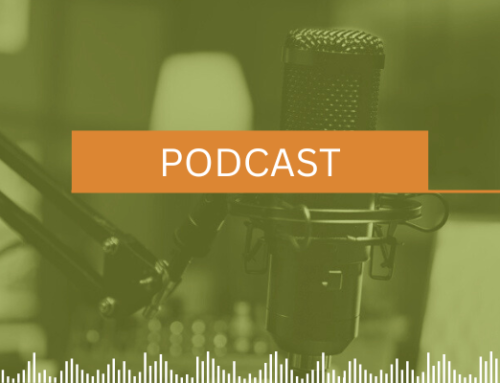Source: RSM US LLP.
ARTICLE | April 06, 2023
The SECURE 2.0 Act of 2022, enacted on Dec. 29, 2022, contains numerous provisions with staggered effective dates for employer-sponsored retirement plans. The Act raises several considerations for employers in assessing the effects of its mandatory provisions and any advantages in adopting its optional provisions.
Here are eight provisions employers should understand as they make decisions that advance their workforce objectives and broader business goals.
1. Mandatory plan coverage of long-term, part-time employees
Currently, part-time employees credited with less than 1,000 hours of service in a 12-month period may be excluded from participating in a qualified retirement plan. However, the predecessor legislation to SECURE 2.0—the SECURE Act, which was enacted in December 2019—provides that for plan years starting in 2024, long-term, part-time (LTPT) employees credited with at least 500 hours of service in each of three consecutive 12-month periods cannot be excluded from eligibility in a 401(k) plan for purposes of making 401(k) contributions.
SECURE 2.0 changes the rule again in 2025 by reducing the consecutive-year periods from three to two and extending the requirement to include 403(b) plans. Thus, for plan years starting in 2025, LTPT employees credited with at least 500 hours of service in each of two consecutive 12-month periods must be allowed to participate in a 401(k) plan or 403(b) plan for purposes of making elective contributions. The LTPT rules apply to employees who are aged 21 or older and will also apply to seasonal employees who work regular full-time schedules but for only part of the year.
Only service beginning on or after Jan. 1, 2021, for 401(k) plans (Jan. 1, 2023, for 403(b) plans), must be included for mandatory coverage of LTPT employees. LTPT employees may be excluded from nondiscrimination and top-heavy testing that otherwise applies to 401(k) and 403(b) plans. Further, while LTPT employees must be covered for purposes of making elective contributions, they are not required to be eligible for employer contributions.
If, however, an employer decides to make matching contributions for LTPT employees, the LTPT employees must be credited with vesting service for any 12-month period going back to 2021 in which the LTPT was credited with at least 500 hours of service.
Issues for employers
Mandatory coverage of LTPT employees may increase administrative burdens and costs, including new processes for:
- Tracking LTPT employees who have post-2020 service of at least 500 hours of service in any two or three consecutive 12-month periods, instead of simply monitoring whether employees are credited with at least 1,000 hours in any single year
- Calculating hours of service equivalencies for part-time employees paid other than by the hour, e.g., by commissions
- Maintaining current contact information for LTPT employees who may typically have higher turnover and rehire rates
- Coordinating accurate temporary, seasonal, and part-time employee information with plan recordkeepers and payroll providers to determine LTPT employee status
- Maintaining additional and smaller participant accounts for LTPT employees
- Monitoring the increased potential for plan operational failures and related plan corrections
- Adjusting enrollment processes and plan communications for LTPT employees eligible for 401(k) or 403(b) deferral contributions, but not for other employee benefits, such as employer contributions, health care coverage or paid time off
Employer business considerations
Employers with large temporary, seasonal, and part-time workforces may mitigate additional burdens and costs by reviewing existing job descriptions and employee schedules to determine whether a particular job requires at least 500 hours of service in a 12-month period.
Further, the hours expected for temporary positions that span two consecutive years may be reevaluated, as well as the scheduling of seasonal employees who may return to full-time employment year after year, e.g., during the retail holiday season.
However, some employers may wish to provide LTPT employees with the same matching contribution as provided to employees credited with at least 1,000 hours of service. In that case, employers should keep in mind that SECURE 2.0 does not require immediate eligibility for employer contributions for LTPT employees. If the plan requires 1,000 hours of service for matching contributions, that rule may be applied to matching contributions for LTPT employees. This may reduce some administrative burden.
Lastly, employers will need to consider whether to make LTPT employees eligible for employer contributions and other plan features on the same basis as other plan participants.
2. Matching contributions for participants making qualified student loan repayments
Starting in 2024, employers are permitted to make matching contributions to 401(k), 403(b) and 457(b) plans on behalf of participants who make repayments of their qualified student loans to third parties. Under this provision, each student loan repayment is treated as if the amount were contributed to the plan by payroll deduction, subject to the plan’s maximum elective contribution limit, even though no such contribution to the plan is made and the participant’s paycheck is not actually reduced.
The employer’s matching contribution to the participant’s account for student loan repayments must be at the same rate applicable to participant plan contributions. Participants may self-certify that the student loan repayments were made and each payment’s amount.
Employer business considerations
The first consideration is whether a student loan match makes business sense, for example, in recruiting and retaining talent. In determining whether to adopt the student loan match, employers should assess how many employees are currently repaying qualified student loans and the positions they hold.
The student loan match may make sense for employers who wish to provide a match for all employees with student debt regardless of salary or job function. It may not work, however, if the purpose is to limit the student loan match only to highly skilled employees that the employer wishes to recruit in a job market competing for those skills. In any event, employers should assess how the student loan match fits into the employee’s total compensation package and the extent to which student loan repayment obligations were already built in, e.g., in the form of higher compensation or other benefits.
Explore more details on the new tool to help employees with student loans
3. Designated Roth account
Plans are not required to allow after-tax Roth contributions or to provide for designated Roth accounts. However, SECURE 2.0’s changes to the catch-up contribution rules (for participants aged 50 and older) may cause an employer to consider amending its defined contribution plan document to add them.
- Starting in 2024, participants with annual wages (as defined in section 3121(a)) over $145,000 can make catch-up contributions only as after-tax Roth contributions. If a plan does not provide for Roth contributions, participants with wages over $145,000 will not be able to make catch-up contributions. Participants with annual wages of $145,000 or less will still be permitted to make pre-tax catch-up contributions and after-tax Roth catch-up contributions if the plan permits.
- Starting in 2025, the maximum catch-up contribution limit will increase from $7,500 to $10,000 (or, if greater, 150% of the 2024 maximum annual catch-up limit), for participants aged 60, 61, 62, or 63. For SIMPLE (Savings Incentive Match Plan for Employees) plans only, the annual catch-up limit increases from $3,500 (as indexed) at age 50 to $5,000 (or, if greater, 150% of the 2025 annual catch-up limit).
Employer business considerations
Adding designated after-tax Roth accounts is important to employees aged 50 and older with wages over $145,000 and especially important for those participants aged 60 through 63. Employers that have not yet adopted Roth accounts might consider adding them so that such employees can make catch-up contributions. Such employers should assess the number of employees with wages over $145,000 and their ages in considering whether the burdens and costs of adding Roth accounts makes sense from a business perspective
It should be noted that, under current rules, a plan that fails nondiscrimination testing with respect to elective deferrals is permitted to recharacterize the excess deferrals as catch-up contributions where possible so that the amounts can stay in the plan rather than being distributed as excess contributions.
Under SECURE 2.0, without designated Roth accounts, excess contributions for participants with wages over $145,000 could not be recharacterized as catch-up contributions and would have to be distributed from the plan. For this reason, an employer that relies on recharacterizing excess contributions as catch-up contributions should consider adding Roth accounts to the plan.
4. Participant election to treat employer contributions as Roth after-tax contributions
Under SECURE 2.0, starting immediately, employers may allow a participant to elect to treat employer contributions as pre-tax or Roth after-tax contributions. The election for Roth treatment would require a participant to pay income tax on the contribution at the tax rate in effect at the time of the contribution rather than the rate in effect when the amounts are distributed. Earnings on amounts treated as Roth contributions would accrue on a tax-free basis and would not be subject to income tax at distribution.
The IRS is expected to clarify in guidance whether there will be a required holding period and how the employee election will be implemented. The implementation of such an election would require additional oversight and close coordination with recordkeepers and payroll providers and increase the potential for operational errors.
Employer business considerations
Employers should identify the business rationale for adding a participant election to treat employer contributions as Roth after-tax contributions due to the administrative burden. It may be worth waiting for IRS guidance on implementing this provision before making the decision to provide for such elections.
It should be noted that the same result is possible if a plan allows participants to roll over vested employer contributions to Roth accounts within the plan, and most recordkeepers already have established procedures for such in-plan rollovers.
5. De minimis financial incentives for 401(k) deferrals
Employers are permitted, starting after Dec. 29, 2022, to provide employees with a de minimis financial incentive to enroll in a 401(k) plan. Previously, qualified plan rules prohibited employers from offering any benefit contingent on contributing to a 401(k) or 403(b) plan. Under the new provision, an employer would be permitted, for example, to give away a low-dollar gift card to an employee who enrolls in the plan. Other incentives might include free food or beverages as prizes at enrollment. The IRS is expected to provide guidance on what de minimis means in this context.
Often, younger workers fail to enroll in a 401(k) plan due to inertia or a lack of urgency to save for a faraway retirement, or employees may be too distracted by busy schedules to think about enrolling. A small financial incentive may be enough to get the attention of nonparticipating employees. Employers should be aware, however, that providing cash or gift cards will result in taxable income to the employee that must be reported on Form W-2 as compensation.
Employer business considerations
A low participation rate by employees may undercut the employer’s business reason for establishing the plan in the first place. Employers should assess the cost of providing a small financial incentive that would cause a meaningful number of employees to enroll in the plan and balance that against the additional task of accounting for the taxable income to the employee and additional administrative expenses the employer may incur as a result.
6. New in-service distributions
SECURE 2.0 allows plans to provide for the following in-service distribution events without a 10% early distribution penalty:
- Up to $1,000 per year for unforeseeable or immediate financial needs relating to personal or family emergency expenses (starting in 2024)
- The lesser of $10,000 (indexed) or 50% of the value of the employee’s vested account under the plan, for expenses related to domestic violence abuse (starting in 2024)
- Certain amounts on account of terminal illness (starting in 2023)
- Up to $2,500 in a “pension-linked emergency savings accounts” available for sudden unexpected personal or family emergencies, payable at least once a month (starting in 2024)
- Permanent rules for plan loans and distributions related to federally declared disasters, including up to $22,000 distributed to a participant per disaster (retroactive to Jan. 26, 2021):
- The amount of income included can be spread over three years
- Amounts distributed may be repaid within three years
- The maximum dollar amount on a disaster-related loan increased to $100,000
In-service distributions are typically handled by recordkeepers and third-party administrators without heavy involvement from the employer. Participants may self-certify their need for the in-service distribution without providing further documentation to the employer.
Employer business considerations
Employers should consider the new in-service distributions rules and determine if they are appropriate for the employer’s particular workforce. Employers of a low-wage or commission-based workforce may consider allowing pension-linked emergency savings accounts so the employees can accumulate readily accessible liquid funds to cover sudden and immediate emergencies, like an expensive car repair, without missing work. Employers should assess whether pension-linked emergency savings accounts may help reduce absenteeism and other disruptions in their workforce.
7. Starting up a new plan
SECURE 2.0 provides incentives for employers to set up new plans in the form of tax credits and simplified administration.
Tax credits
- New tax credit for employer contributions. Starting in 2023, small employers with 100 or fewer employees can claim a tax credit for employer contributions made to a new qualified retirement plan. The credit is available for the first five tax years from the plan’s initial effective date. Subject to a cap of $1,000 per employee, an eligible employer with 50 or fewer employees can claim 100% of the employer’s contributions in the first and second tax years, 75% in the third year, 50% in the fourth year, and 25% in the fifth year of the plan.
For eligible employers with 51 to 100 employees, the credit is reduced by 2% for each employee over 50. No credit is allowed for employer contributions on behalf of employees with wages more than $100,000 (2023, as indexed), or for an employer with more than 100 employees.
- Increased tax credit for new pension plan startup costs. Starting in 2023, the tax credit available to small employers with 100 or fewer employees for the startup costs of establishing a new defined contribution plan is increased.
For employers with 50 or fewer employees, the tax credit increases from 50% up to 100% of the qualified costs incurred in the first three years of starting up a new plan. The maximum credit remains limited to $5,000 per year. Employers with 51 to 100 employees are still eligible for the credit of 50% of qualified start-up costs for the first three years, with a maximum credit of $5,000 annually.
- Tax credit for military spouse retirement plan eligibility. The Act provides a tax credit of $200 for each non-highly compensated military spouse who participates in a defined contribution plan of a small employer, plus a credit for employer contributions of up to $300 for the military spouse’s first three years of plan participation as part of the general business credit.
“Starter” deferral only plans
Effective in 2024, the Act created a new type of “starter plan” available to employers of any size who have not maintained a retirement plan in the last three years. The starter plan permits only employee elective contributions and catch-up contributions. The annual contribution limit is capped at $6,000 (as indexed), with a maximum of $1,000 (as indexed) catch-up contribution. A starter deferral-only plan is required to provide for automatic contributions starting at 3% of compensation, up to a maximum of 15%, and is not subject to nondiscrimination testing.
Extended deadline for retroactive elective contributions by a sole proprietor
The Act extends the retroactive elective contribution deadline for sole proprietors for the first year of a new plan from the end of the first year of the plan to the sole proprietor’s tax return due date. For example, under the SECURE 2.0 provision, a sole proprietor with no employees could, at any time up to the 2024 tax return due date (without regard to extensions), decide to retroactively establish a 401(k) plan effective Jan. 1, 2024, and contribute elective contributions to the plan up to the 2024 maximum annual limit. Previously, the plan would have to be established by the end of the year for which the contributions were made.
Employer business considerations
Small employers who have considered adopting a retirement plan in the past may wish to take another look considering SECURE 2.0’s tax credit for employer contributions, enhanced start-up tax credit, increased annual contribution limits for SIMPLE plans, and slimmed-down starter deferral-only plan option. A key consideration in starting up a new plan is whether offering a retirement plan to employees aligns with the employer’s business goals, including, for example, attracting and retaining employees, deferring taxable income for owners and employees, the workforce’s demand for a plan, and resources available for plan oversight. However, if a small employer has not adopted a plan in the past solely because of the costs and heavy administrative burden, SECURE 2.0 is an opportunity to move ahead. The tax credits for employer contributions over five years and for plan start-up costs serve to reduce costs.
Still interested? Read more about what SECURE 2.0 means for small employers
Automatic enrollment is mandatory for new 401(k) and 403(b) plans, except SIMPLEs
Starting in 2025, plan sponsors will be required to include an eligible automatic contribution arrangement in new 401(k) or 403(b) plans established after Dec. 29, 2022. The automatic contribution rate during a participant’s first year of participation must not be less than 3% or greater than 10% unless the participant opts out, with automatic 1% annual deferral increases up to at least 10% but not more than 15% (10% for 401(k) safe harbor plans). After deferral, the plan must provide that participants have the right to withdraw automatic contributions from the plan within 90 days of the first contribution.
Automatic contribution arrangements, however, will not be mandatory for SIMPLE 401(k) or SIMPLE-IRA plans, plans of employers with 10 or fewer employees, plans of employers in existence for less than three years, and governmental and church plans.
Further, employers who adopt a SIMPLE 401(k) plan or SIMPLE-IRA are not subject to the automatic enrollment requirements. For employers with more than 10 employees who adopt new 401(k) or 403(b) plans, employees would be automatically enrolled unless they opt out, reducing the administrative burden associated with enrollment. Typically, a third-party administrator handles automatic enrollment.
8. Changing to a different plan
Starting in 2024, SECURE 2.0 increases the maximum contribution limits for both SIMPLE 401(k) and SIMPLE-IRAs. The new rule allows an employer with 25 or fewer employees to make nonelective employer contributions over and above the required 2% limit, capped at the lesser of 10% of the employee’s compensation or $5,000 (2024, as indexed).
Further, under SECURE 2.0, the maximum amount an employee can elect to contribute to the plan is 110% of the annual limit established by the IRS ($15,500, 2023). Employers with 26 or more employees can take advantage of this increase in the elective contribution limit only if they increase the required 3% matching contribution to 4% or increase the required 2% nonelective contribution to 3%.
Also, starting in 2024, an employer with 100 or fewer employees sponsoring a SIMPLE 401(k) or SIMPLE-IRA can terminate the SIMPLE and replace it with a safe harbor 401(k) or 403(b) plan mid-year. This may occur, for example, because SECURE 2.0’s increased limits would allow a SIMPLE plan sponsor to make nonelective employer contributions of 3%—the same nonelective contribution required under a safe-harbor 401(k) plan.
Employer business considerations
An employer sponsoring a SIMPLE 401(k) plan may want to convert to a safe harbor 401(k) plan to take advantage of the 401(k) plan’s higher limits: elective contributions ($22,500 for 401(k) plans vs. $15,500 for SIMPLEs, in 2023) and catch-up contributions ($7,500 for 401(k) plans vs. $3,500 for SIMPLEs in 2023). Additionally, a safe-harbor 401(k) plan may be more flexible than a SIMPLE plan with respect to discretionary provisions. For example, a discretionary profit-sharing contribution that is integrated with Social Security may be designed with a safe-harbor 401(k) plan, which may be desirable as the company grows
One factor to keep in mind is that, unlike a traditional nonsafe harbor 401(k) plan, a SIMPLE 401(k) plan is not subject to nondiscrimination testing and top-heavy rules, provided certain requirements are satisfied. Employers will need to fully evaluate the type of retirement plan that works best for their business.
Conclusion
SECURE 2.0 gives employers new tools for providing retirement benefits to employees. Employers should evaluate them, considering their business goals and workforce composition. It may be time for employers to evaluate their existing retirement plans, and for those employers without plans, to take another look at adopting one.
This article was written by Joni Andrioff, Christy Fillingame, Catherine Davis, Chloe Webb and originally appeared on 2023-04-06. Reprinted with permission from RSM US LLP.
© 2024 RSM US LLP. All rights reserved. https://rsmus.com/insights/services/business-tax/secure-20-considerations-to-achieve-your-workforce-and-business-goals.html
RSM US LLP is a limited liability partnership and the U.S. member firm of RSM International, a global network of independent assurance, tax and consulting firms. The member firms of RSM International collaborate to provide services to global clients, but are separate and distinct legal entities that cannot obligate each other. Each member firm is responsible only for its own acts and omissions, and not those of any other party. Visit rsmus.com/about for more information regarding RSM US LLP and RSM International.
The information contained herein is general in nature and based on authorities that are subject to change. RSM US LLP guarantees neither the accuracy nor completeness of any information and is not responsible for any errors or omissions, or for results obtained by others as a result of reliance upon such information. RSM US LLP assumes no obligation to inform the reader of any changes in tax laws or other factors that could affect information contained herein. This publication does not, and is not intended to, provide legal, tax or accounting advice, and readers should consult their tax advisors concerning the application of tax laws to their particular situations. This analysis is not tax advice and is not intended or written to be used, and cannot be used, for purposes of avoiding tax penalties that may be imposed on any taxpayer.




